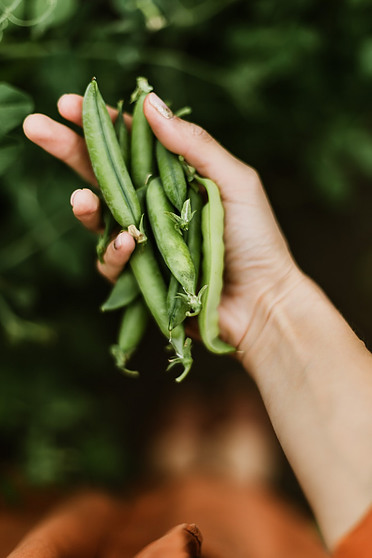What could be better than tender pods of bright green and sweet peas that herald spring? So the good news is that the time for growing peas outdoors is coming. This annual herbaceous plant from the Fabaceae family is relatively easy to grow, and there is no fear of frostbite – even if it is one of the first vegetables to be planted very early in the season, as soon as the sun warms the soil even a little.
Peas are grown mainly for the seeds, but in some instances, the pods are also consumed. The young and tender fruits and seeds are also delicious raw, but later they can be cooked and used in a wide variety of dishes, from soups to salads and side dishes.
Like other legumes, peas are a rich protein source and contain some sugar, starch, and lecithin, among others. Varieties with wrinkled grains have a higher amount of lecithin, and chlorophyll is preserved longer in them, which is why the ripe grains of this variety are distinctly green in color.
The pea forms a spindle-shaped root that penetrates deep into the soil, up to 120 cm, and is well-branched, so it needs a lot of space to grow. The height depends on the variety; some can grow up to 2 meters when supported, while short types reach up to 30 cm. The flowers are butterfly-shaped and white. The pods have different shapes, lengths, widths, and color combinations. The number of grains also varies depending on the variety.
Peas Tolerate Low Temperatures, so the Time to Growing Peas Outdoors Is Coming as Soon as the Ground Thaws
Peas are successfully grown in cool and humid climates. The optimal temperature for growth and development is 18 degrees Celsius, and a few degrees above 4 degrees Celsius is sufficient for germination. A sunny position is the most favorable; it thrives a little worse in the shade. However, despite the temperature conditions mentioned above, peas can also withstand a shorter period of frost.
It is more affected by heat than a cold environment – anything above 30 degrees Celsius can be a threat.
If Possible, Try to Grow Peas in a Different Place Every Year
Choose a sunny spot with good soil drainage to grow this legume. Avoid the part of the garden where you already planted the previous year. Multi-year crop rotation is best, as pests and diseases that attack peas can linger in the soil and thus cause damage in the new season. Consider raised beds if the soil is poorly drained or there is a large amount of spring rainfall.
Plant the seeds about 1 inch deep and 2 inches apart. Rows should be at least 7 centimeters apart. Most pea varieties need support to grow.
Peas Need a Lot of Sunlight and Clay Soil
Peas need a lot of sunlight, which means at least six hours of direct sunlight a day. It can adapt to a lack of light to some extent, but this often has a negative effect on the growth and taste of the crop.
In addition to light, it also needs rich, loamy soil with good drainage. The ideal soil is slightly acidic to neutral.
If the soil is depleted, it is recommended to fertilize it well in the initial phase. Nitrogen fertilizers are used in smaller quantities and only to supply the plant with nitrogen in the first stages of development.
Just the Right Amount of Water Is Significant When Growing Peas Outdoors
Proper watering is one of the essential factors in successful pea production. Please do not allow the soil to dry out completely, but do not let it become soggy. About one inch of water per week is enough.
Peas Are Best Consumed as Soon as Possible After Harvesting
After your pea plant blooms, regularly check to see if the pods are ready to harvest. Most varieties mature in about 65 days after planting. Sweet peas can be harvested when small peas appear in their pods. In the case of varieties in which only the inner grains are consumed, but not the pods, ripeness can be recognized by the thickness of the pods.
The best time to pick peas is in the morning. Using your hands, gently roll the pods off the stem, taking care not to damage the stem and developing pods.
